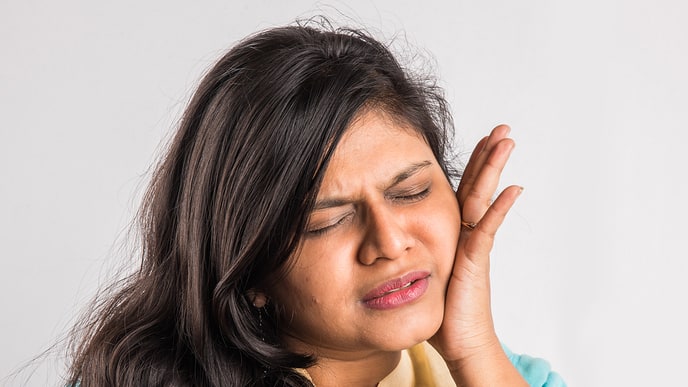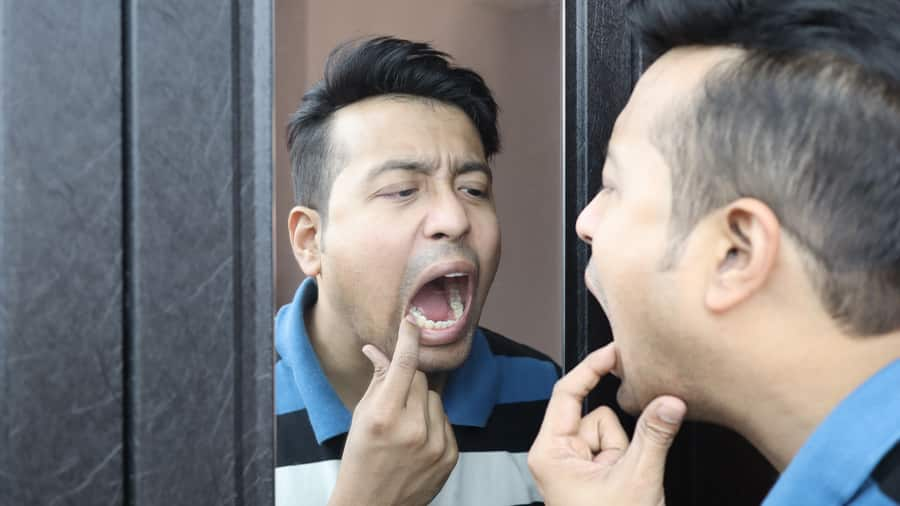Change Your Toothpaste
Often, a dentist's first recommended treatment is to change the toothpaste you are using. Certain types of toothpaste can be too abrasive for some people. As many as 20 percent of people, for example, find using tartar-control toothpaste makes their teeth more sensitive. Some types of whitening toothpastes can also be too strong for sensitive teeth.
Along with switching to a gentler toothpaste, you might find using a product made specifically for sensitive teeth helps too. Some toothpastes are designed to reduce sensitivity. A common ingredient is potassium nitrate, a compound that sinks into the small tubules on the surfaces of your teeth and keeps the nerves from reacting to extreme temperatures. It is one of the few ingredients approved by the Indian Dental Association (IDA) for treating sensitive teeth.
When you switch to a sensitive teeth toothpaste, it is important to give it time to work. You'll most likely have to use the toothpaste for several days or a few weeks before you feel results.
Change Your Brushing Habits
Brushing your teeth vigorously or using a toothbrush with medium or hard bristles might feel as though you're cleaning your teeth and gums more thoroughly, but this can actually do more harm than good. The harder the bristles on your toothbrush are, the easier it is for them to wear down your enamel. Brushing with a lot of pressure and force can do the same thing, increasing the risk for future sensitivity.
Instead of tough brushing, take a more patient approach to protecting your teeth while sweeping away bacteria and bits of food. Switch to a toothbrush with soft bristles and use less pressure – particularly around problem spots. Hold the brush at a 45-degree angle to your teeth and move it back and forth in short strokes. Try to be as gentle as possible as you move across the surfaces of each tooth.
Although regular brushing is important, try not to overdo it. Stick to brushing twice a day, unless your dentist recommends you do so more often, and limit each brushing session to two minutes. Sometimes, less really is more, especially if you're pursuing sensitive teeth treatment.
Change Your Diet
Making a few simple changes to your diet can also help reduce your teeth's sensitivity without breaking the bank. Even some otherwise healthy foods can be harmful in the long term. Foods that are very acidic, such as citrus fruits, pickles and tomatoes; as well as certain beverages such as wine, can wear down your tooth's enamel and increase your sensitivity. You do not have to give up these acidic foods, but you should neutralize their impact by eating them along with saliva-promoting or enamel-strengthening foods, such as cheese and other dairy products.
Whether you have just noticed some sensitivity in your teeth or have been dealing with the issue for a while, your best bet for a strong mouth (and wallet) is to try conservative treatments first. Changing your toothpaste might seem like a simple solution, but it might just be the adjustment you need.
This article is intended to promote understanding of and knowledge about general oral health topics. It is not intended to be a substitute for professional advice, diagnosis or treatment. Always seek the advice of your dentist or other qualified healthcare provider with any questions you may have regarding a medical condition or treatment.
ORAL HEALTH QUIZ
What's behind your smile?
Take our Oral Health assessment to get the most from your oral care routine
ORAL HEALTH QUIZ
What's behind your smile?
Take our Oral Health assessment to get the most from your oral care routine












